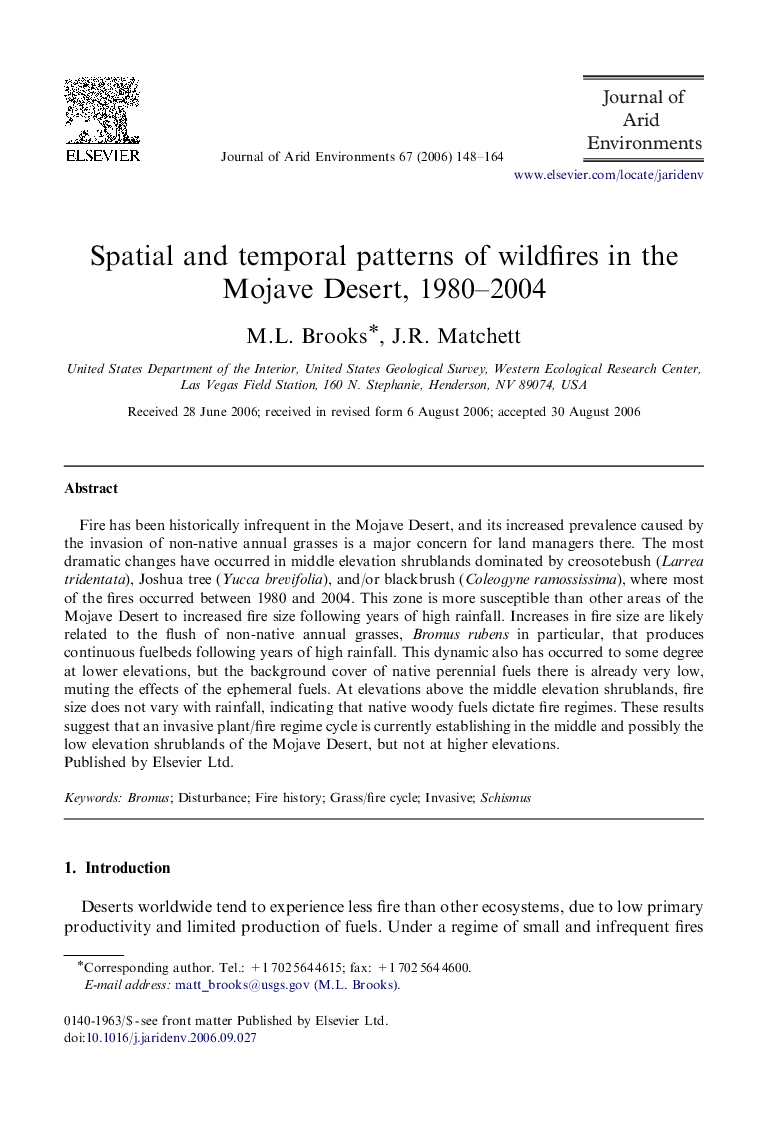| Article ID | Journal | Published Year | Pages | File Type |
|---|---|---|---|---|
| 4394879 | Journal of Arid Environments | 2006 | 17 Pages |
Fire has been historically infrequent in the Mojave Desert, and its increased prevalence caused by the invasion of non-native annual grasses is a major concern for land managers there. The most dramatic changes have occurred in middle elevation shrublands dominated by creosotebush (Larrea tridentata), Joshua tree (Yucca brevifolia), and/or blackbrush (Coleogyne ramossissima), where most of the fires occurred between 1980 and 2004. This zone is more susceptible than other areas of the Mojave Desert to increased fire size following years of high rainfall. Increases in fire size are likely related to the flush of non-native annual grasses, Bromus rubens in particular, that produces continuous fuelbeds following years of high rainfall. This dynamic also has occurred to some degree at lower elevations, but the background cover of native perennial fuels there is already very low, muting the effects of the ephemeral fuels. At elevations above the middle elevation shrublands, fire size does not vary with rainfall, indicating that native woody fuels dictate fire regimes. These results suggest that an invasive plant/fire regime cycle is currently establishing in the middle and possibly the low elevation shrublands of the Mojave Desert, but not at higher elevations.
